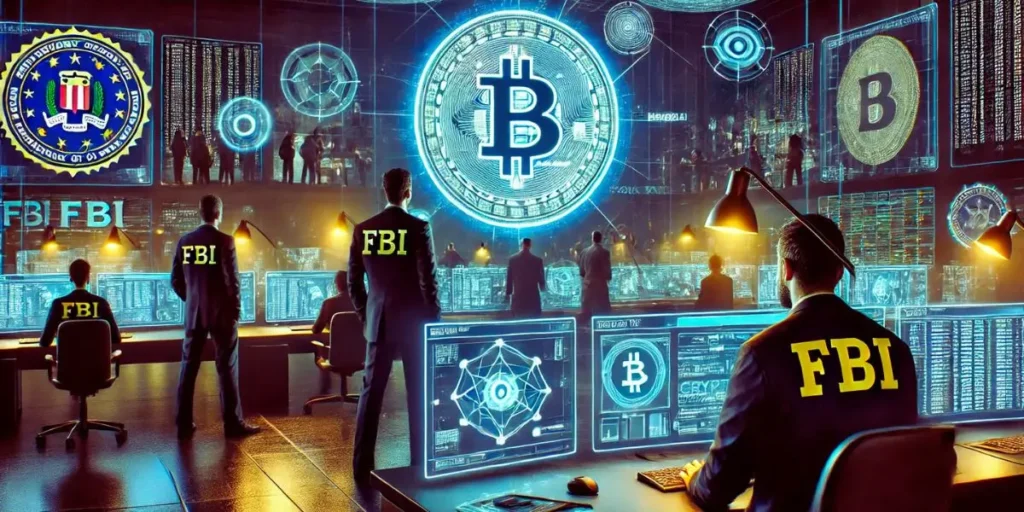Have you ever imagined the FBI diving into the world of cryptocurrencies? It might sound like a Hollywood movie plot, but this story is far from fiction. The FBI has taken a bold step by creating a fake cryptocurrency token to infiltrate the volatile world of crypto fraud. This unique move marks a turning point in how law enforcement combats financial crimes in the ever-evolving crypto space.
The NexFundAI Token, the FBI’s cryptocurrency, was the centerpiece of a sophisticated sting operation called “Operation Token Mirrors.” The mission? To unmask fraudsters manipulating the market in the Web3 ecosystem. As a result, 18 individuals connected to illegal crypto schemes were arrested, marking a significant victory for the agency.
But how did this ingenious plan unfold? And what can it tell us about the evolving tactics of fraud prevention in the digital world?
The FBI’s Fake Token: A cunning trap for Scammers
The FBI developed NexFundAI as a security token on the Ethereum blockchain. This token wasn’t meant to hold real value but served as bait for potential scammers. The idea was simple: By advertising NexFundAI as a legitimate investment in AI-based projects, the FBI aimed to attract market manipulators and track their fraudulent activities in real-time.
The tactic worked. According to federal prosecutors, NexFundAI was used to identify participants in pump-and-dump schemes, money laundering operations, and wash trading practices. These operations aim to artificially inflate a token’s value, misleading investors into buying the asset at inflated prices.
Among those arrested were executives from four crypto companies and market makers, financial firms responsible for creating liquidity but who also engaged in illegal market manipulation.
What Is Wash Trading, and Why is it dangerous?
Wash trading involves executing trades with oneself or an accomplice to create the illusion of high trading activity and demand for a token. In traditional markets, this practice has long been outlawed, but it remains a persistent problem in the crypto world.
ZM Quant, one of the companies implicated in the FBI’s sting, reportedly accounted for 80% of NexFundAI’s trading volume. Unwittingly, ZM Quant became a central piece in the FBI’s operation, helping the agency track illicit behavior across platforms like Binance, HTX, and Tokenlon.
Have you ever wondered how many crypto tokens inflate their value artificially? As investors, it’s crucial to recognize these schemes to avoid falling victim to fraudulent practices.
Operation Token Mirrors: Unmasking fraud in real-time
The success of Operation Token Mirrors relied heavily on the cooperation between the FBI, the Securities and Exchange Commission (SEC), and other regulatory bodies. This multi-agency effort resulted in the confiscation of over $25 million in cryptocurrencies and the dismantling of bots responsible for manipulating around 60 crypto assets.
According to Joshua Levy, acting U.S. Attorney, the case sends a clear message:
“Making false statements to mislead investors is fraud, plain and simple.”
Several individuals involved in the scheme have already pleaded guilty, and arrests were made across Texas, the U.K., and Portugal. The operation has been hailed as an unprecedented success in the fight against financial crime in the digital age.
Legal and Ethical Concerns: A New frontier for Law Enforcement
While Operation Token Mirrors showcased the FBI’s innovative tactics, it also raised some ethical and legal questions. One criticism came from developer cygaar, who noted that the FBI used code libraries from OpenZeppelin without proper licensing under the MIT license. Moreover, the exposure of the FBI’s crypto wallets on blockchain explorers like Etherscan could jeopardize future operations.
These developments raise the question:
Should law enforcement agencies be allowed to manipulate markets, even for legitimate purposes?
While the operation successfully nabbed fraudsters, it also opened the door for debate about the limits of state intervention in financial markets.
Conclusion: What Can We Learn from Operation Token Mirrors?
The FBI’s approach signals a new era in fraud prevention within the crypto space. Operation Token Mirrors demonstrates that law enforcement is adapting to the complexities of the digital economy, infiltrating networks that were once thought to be untraceable. But it also highlights the importance of transparency and ethical boundaries, even when pursuing criminals.
As investors, staying informed and vigilant is more important than ever. With market manipulation and fraudulent schemes becoming increasingly sophisticated, understanding the risks can help protect your investments.
So, what do you think? Should government agencies use these kinds of undercover operations to fight crypto fraud, or do they risk crossing ethical lines? Share your thoughts in the comments below.
FAQs
What is Operation Token Mirrors?
Operation Token Mirrors was an FBI sting operation using a fake cryptocurrency called NexFundAI to catch market manipulators and crypto fraudsters.
What is wash trading in crypto?
Wash trading involves executing fake trades to create the illusion of demand, inflating a token’s value to mislead investors.
What companies were involved in the FBI investigation?
Companies like ZM Quant, Gotbit, and CLS Global were implicated in fraud during the operation.
How much cryptocurrency did the FBI seize?
The FBI confiscated more than $25 million worth of cryptocurrency assets.
Is it ethical for law enforcement to create fake tokens?
While the tactic proved effective, it raises ethical concerns about state market interference and manipulating unsuspecting investors.
Twitter Linkedin Facebook Telegram Instagram Google News Amazon Store
